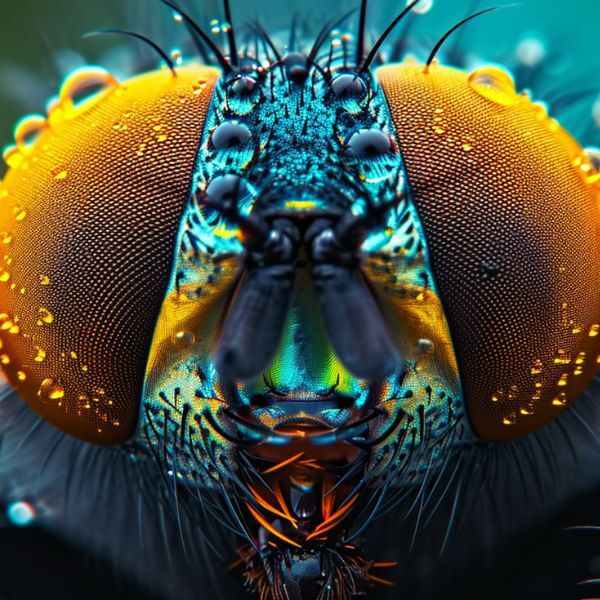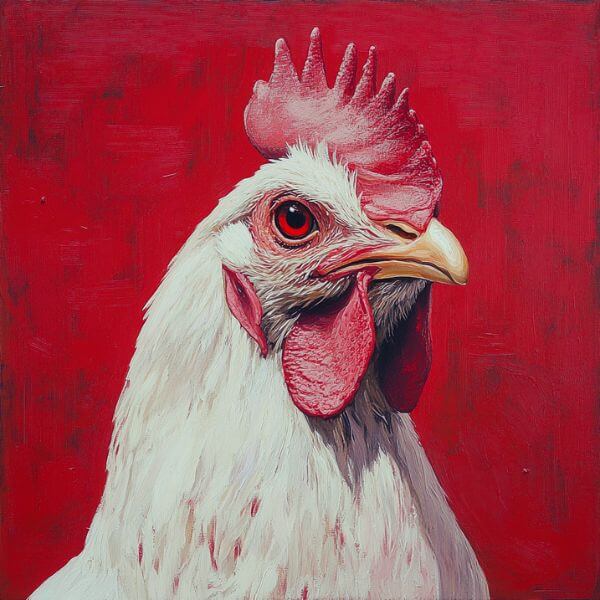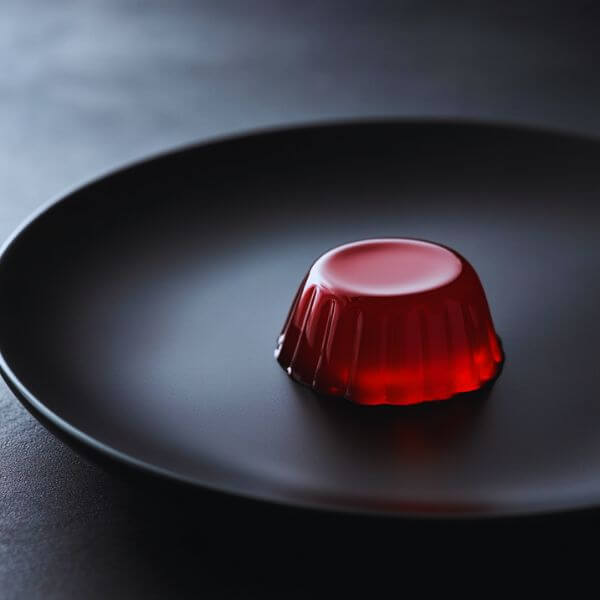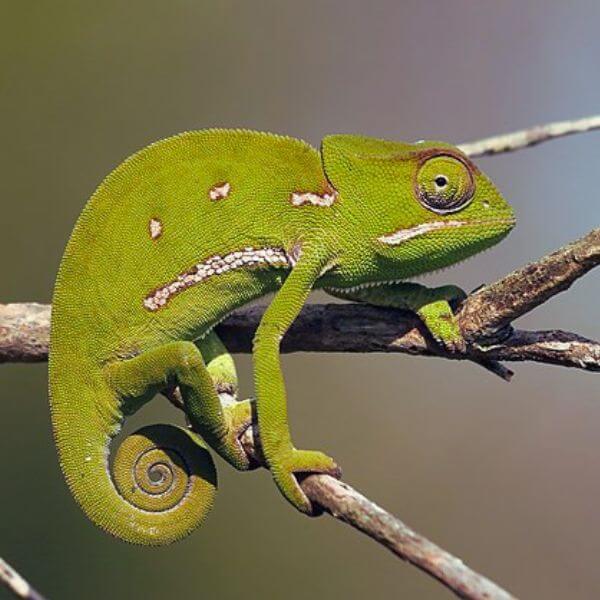Yes, flies are generally safe for chameleons to eat.
As insectivores, chameleons are well-equipped to catch and digest various types of insects, including flies.
Flies offer several benefits as chameleon food:
- High protein content
- Low fat
- Natural hunting stimulation
- Hydration (due to high moisture content)
However, it’s important to note that flies should be part of a varied diet and not the sole food source for your chameleon.
Types of Flies Suitable for Chameleons
Not all flies are created equal when it comes to chameleon nutrition. Here are some of the most suitable types of flies for your pet:
| Type of Fly | Size | Nutritional Value | Best For |
| House flies | Small to medium | Good protein source | Most chameleon species |
| Fruit flies | Very small | High in vitamins | Smaller chameleons, juveniles |
| Blue bottle flies | Large | High protein, low fat | Larger chameleon species |
| Green bottle flies | Medium | Good all-round nutrition | Most chameleon species |
When choosing flies for your chameleon, consider the size of your pet and its individual preferences.
Some chameleons may show a preference for certain types of flies over others.
How Often to Feed Chameleons Flies
The feeding frequency for chameleons depends on various factors, including age, species, and overall health.
Here’s a general guideline:
- Adult chameleons: 3-5 times per week
- Juvenile chameleons: Daily
- Pregnant females: Daily, with increased portions
Remember, flies should be part of a diverse diet that includes other insects like crickets, roaches, and worms.
Variety is key to ensuring your chameleon receives a balanced diet.
Nutritional Value of Flies for Chameleons
Flies are a nutritious food source for chameleons, offering a good balance of protein, fat, and moisture.
Here’s a breakdown of the nutritional content of common feeder flies:
| Nutrient | House Flies | Fruit Flies | Blue Bottle Flies |
| Protein | 50-60% | 40-50% | 55-65% |
| Fat | 10-20% | 20-30% | 15-25% |
| Moisture | 70-75% | 70-75% | 70-75% |
Flies also provide various vitamins and minerals, including:
- Calcium
- Phosphorus
- Vitamin B complex
- Iron
The hydration benefits of flies are particularly noteworthy, as they can help maintain your chameleon’s water balance, especially in species that don’t readily drink from water sources.
What Are the Risks of Feeding Flies to Chameleons?
While flies can be a healthy part of a chameleon’s diet, there are some risks to be aware of:
- Pesticide contamination: Wild-caught flies may contain harmful pesticides.
- Parasites and diseases: Flies can carry parasites or pathogens that may affect your chameleon.
- Choking hazards: Large flies may pose a choking risk for smaller chameleons.
- Nutritional imbalances: Overreliance on flies can lead to nutritional deficiencies.
- Wild-caught vs. captive-bred: Wild flies may carry more risks than those bred for feeding purposes.
To minimize these risks, it’s best to use captive-bred flies from reputable sources and maintain a varied diet for your chameleon.
Best Practices for Feeding Flies to Chameleons
To ensure your chameleon benefits from flies in their diet, follow these best practices:
- Gut-loading: Feed the flies nutrient-rich foods 24-48 hours before offering them to your chameleon.
- Proper sizing: Choose flies that are appropriately sized for your chameleon species.
- Dusting flies: Coat the flies with calcium or vitamin supplements before feeding.
- Safe feeding techniques: Use feeding cups or tongs to prevent escape and maintain hygiene.
Here’s a simple gut-loading recipe for flies:
| Ingredient | Purpose |
| Carrot | Vitamin A source |
| Apple | Hydration and vitamins |
| Wheat germ | Protein and B vitamins |
| Bee pollen | Amino acids and minerals |
Mix these ingredients and offer them to the flies 24-48 hours before feeding them to your chameleon.
Frequently Asked Questions (FAQs)
Can baby chameleons eat flies?
Yes, baby chameleons can eat flies, but it’s important to choose appropriately sized flies. Fruit flies are often a good choice for very young chameleons.
How many flies should I feed my chameleon per day?
The number of flies depends on your chameleon’s size and age. As a general rule, offer 5-7 flies per feeding for adult chameleons, adjusting based on your pet’s appetite and body condition.
Are wild flies safe for chameleons?
While chameleons eat wild flies in nature, it’s best to avoid feeding wild-caught flies to captive chameleons due to the risk of pesticides and parasites.
Can chameleons eat dead flies?
Chameleons prefer live prey and may not recognize dead flies as food. Additionally, dead flies can quickly spoil and harbor bacteria.
Do all chameleon species eat flies?
Most chameleon species will eat flies, but individual preferences may vary. Some larger species may prefer bigger insects.
How do I breed flies for my chameleon?
Breeding flies can be a cost-effective way to provide food for your chameleon. Set up a breeding container with appropriate medium and food sources. Research specific breeding techniques for the fly species you choose.
Can flies make my chameleon sick?
Flies can potentially make your chameleon sick if they carry parasites or diseases. This risk is higher with wild-caught flies, which is why it’s safer to use captive-bred flies from reputable sources.
Should I gut-load flies before feeding them to my chameleon?
Yes, gut-loading is important to enhance the nutritional value of the flies. Feed the flies nutrient-rich foods 24-48 hours before offering them to your chameleon.
Conclusion
Flies can be a nutritious and stimulating part of your chameleon’s diet.
By understanding the benefits, risks, and best practices associated with feeding flies to chameleons, you can ensure your pet receives optimal nutrition and enjoys a varied diet.
Remember to source your flies from reputable suppliers, gut-load them properly, and offer them as part of a diverse insect diet.
With the right approach, flies can contribute to your chameleon’s health, happiness, and natural hunting behaviors.
Always consult with a veterinarian specializing in reptiles if you have specific concerns about your chameleon’s diet or health. Happy feeding!







Leave a Reply